
11 minute read
Feasting in Fés
A Gastronomic Adventure
BY: ANDREW MARSHALL
Advertisement
It is said that in order for a nation to develop a great cuisine, it must have four prerequisites. A rich land from which to draw upon an abundant range of ingredients, a variety of foreign cultural influences, a great civilization and lastly, a refined palace with royal kitchens to inspire the nation’s cooks. Morocco has it all and is home to some of the most tantalizing food imaginable.
From robust roasts to rich aromatic stews, spiced or sweetened salads to savory pastries, fragrant mounds of couscous to bastilla, an exquisite blend of shredded pigeon, a spiced onion sauce with saffron and herbs encased in a flaky, filolike pastry topped with cinnamon and sugar - an intricate dish that epitomizes everything that is grand and extravagant in Moroccan cooking.
One of the most interesting ways to absorb the delights and diversity of the country’s cuisine is to visit the souks (markets) and where better than Fés, often regarded as Morocco’s culinary capital. To wander through the myriad of laneways that make up the medina of Fés el Bali (old Fés) sampling the food on offer, is to take a gastronomic journey through Morocco itself.
Early morning is a wonderful time to be out and about and I set off to get thoroughly lost in Fés el Bali. Sunlight streams in slanted rays through the woven bamboo shades covering the narrow alleyways, catching the steam rising from the many cookers, the air awash with all manner of exotic aromas. Great crusty rounds of warm khobz (traditional Moroccan bread) are on display at the feet of an old man crouching behind his produce. Munching on this doughy aniseed-flavored bread is the perfect accompaniment for exploring the medina. In most Moroccan homes bread is prepared every morning, kneaded in unglazed red clay pans and sent to the community bakery on the heads of children on their way to school.
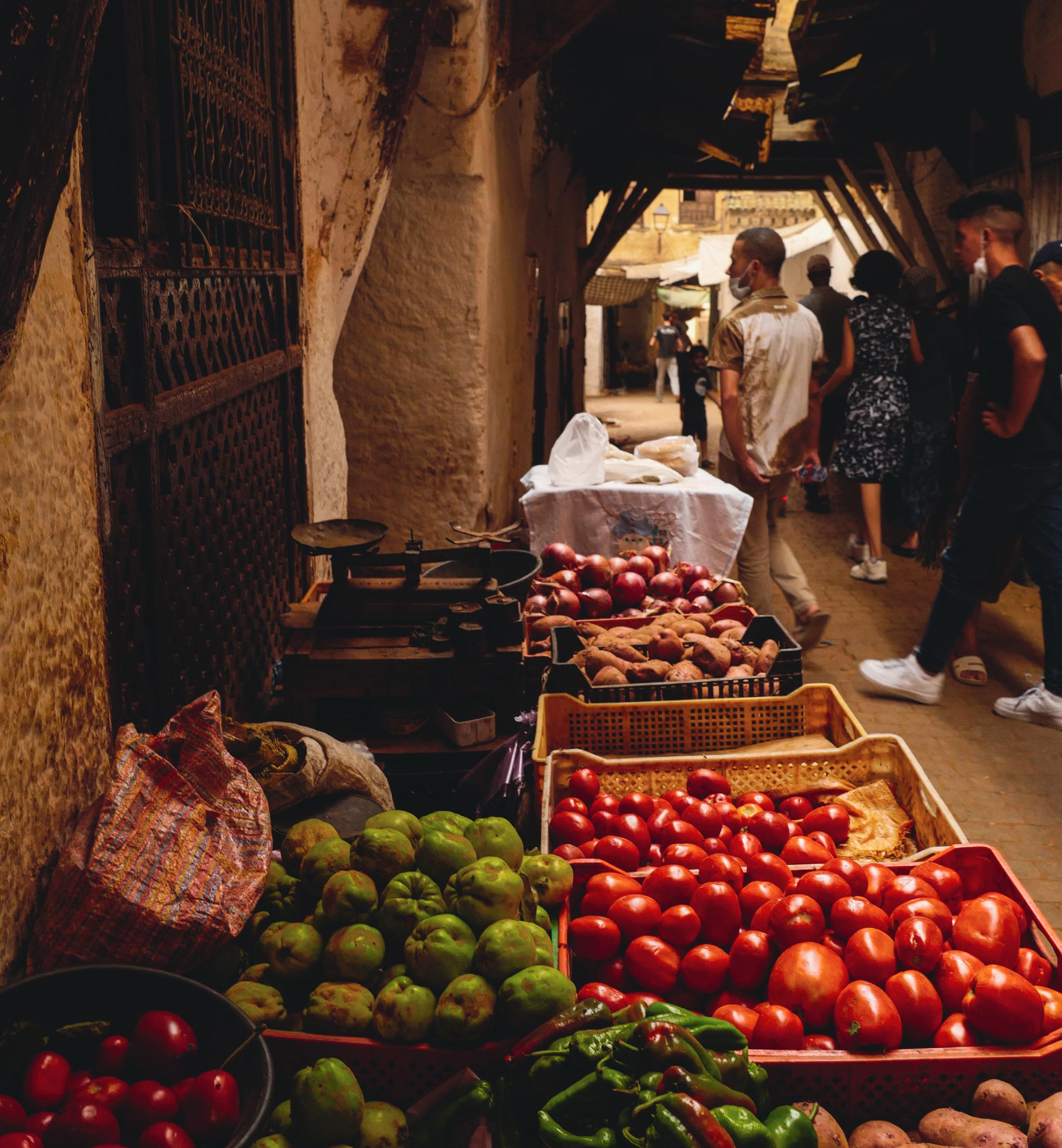
Close to the city gate of Bab Bou Jaloud one stallholder is already busy cooking and selling one of the most common forms of Moroccan breakfasts, square-shaped pancakes called msemen. With deft handwork he pinches small balls of dough and presses them into a paper-thin squares covered with oil. Folded, then folded again he slips them onto a skillet sizzling with oil where they materialize into flaky pancakes waiting to be served to eagerly waiting customers with butter and honey.
In a nearby fruit and vegetable souk, produce of every kind line the street - juicy oranges, lemons and grapefruits from the sun-drenched groves of Agadir, golden melons, vine-ripened tomatoes, clementines, crisp celery and plump mounds of grapes, preserved fruits and nuts. Entire shops are jam-packed with nothing but olives - of every flavor, size, quality and color or bunches of fresh mint displayed in baskets and hanging from ceilings.
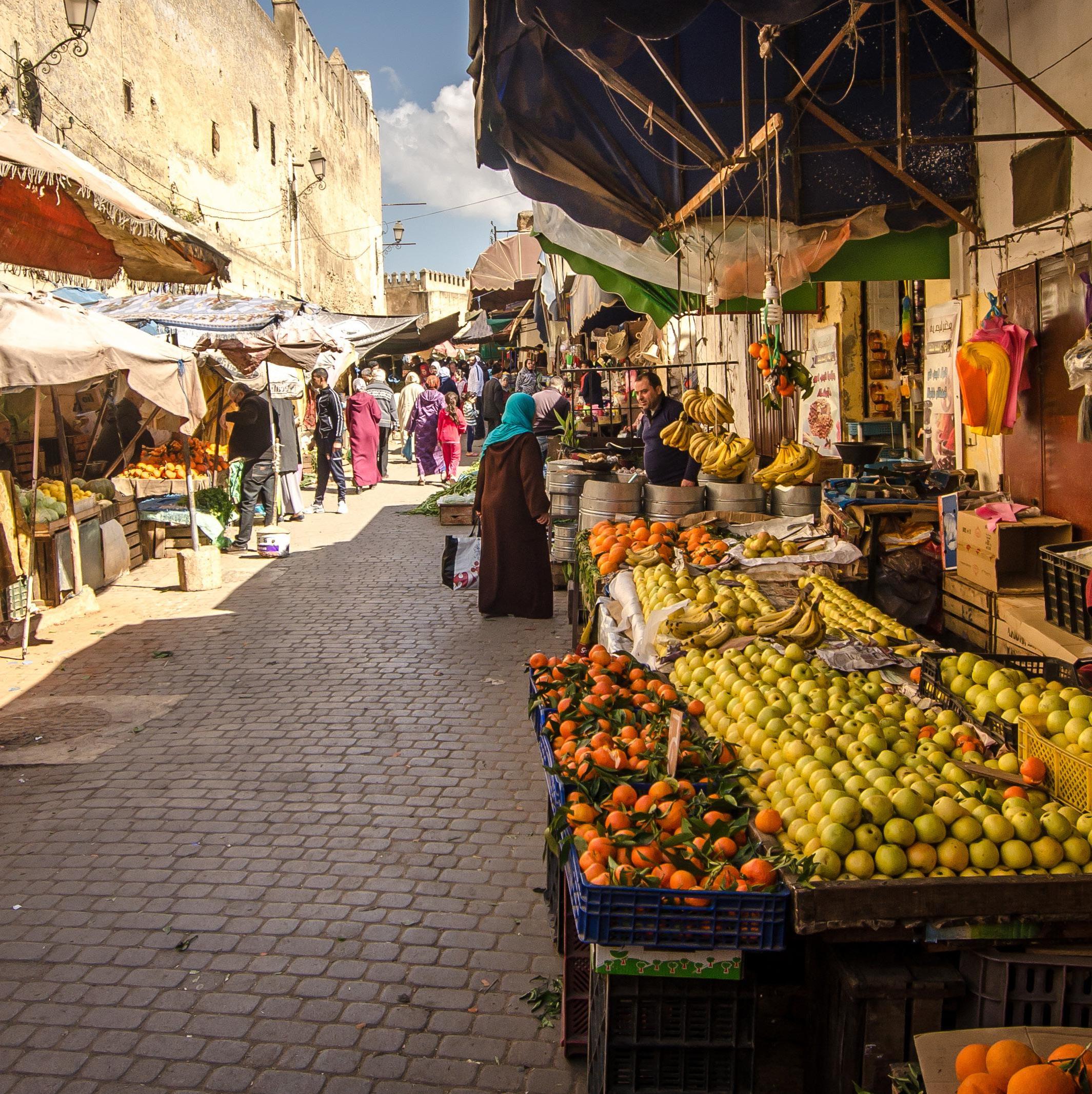
I head down into the dark underworld of the souks, through alleys so narrow that the only way the shopkeepers can get their stock in, is on a donkey's back. The medina's 9400 lanes and streets seethe with a human tide of endlessly streaming humanity, crammed with shops, restaurants, mosques, rug stores and even tanneries. Somewhere near the Al-Attarine quarter I stumble upon a spice souk.
The smell, color and variety of spices are striking. There are the bright reds of paprika and cayenne peppers alongside rich yellow turmeric, soft-hued ginger, dusty sticks of cinnamon all contrasting in texture with seeds of cumin, sesame, aniseed, caraway, coriander and many more. All are heaped in tubs waiting to be measured into twisted envelopes of paper. These are some of the spices that form the soul of Moroccan cooking, transforming simple dishes to exotic heights.
This Moroccan love of spices is a tradition handed down for thousands of years from their ancestors, who brought them in caravans across North Africa from Arabia and beyond. They brought with them the sophisticated knowledge of their uses as perfumes and medicines, as an enhancement of food and as currency for trade.
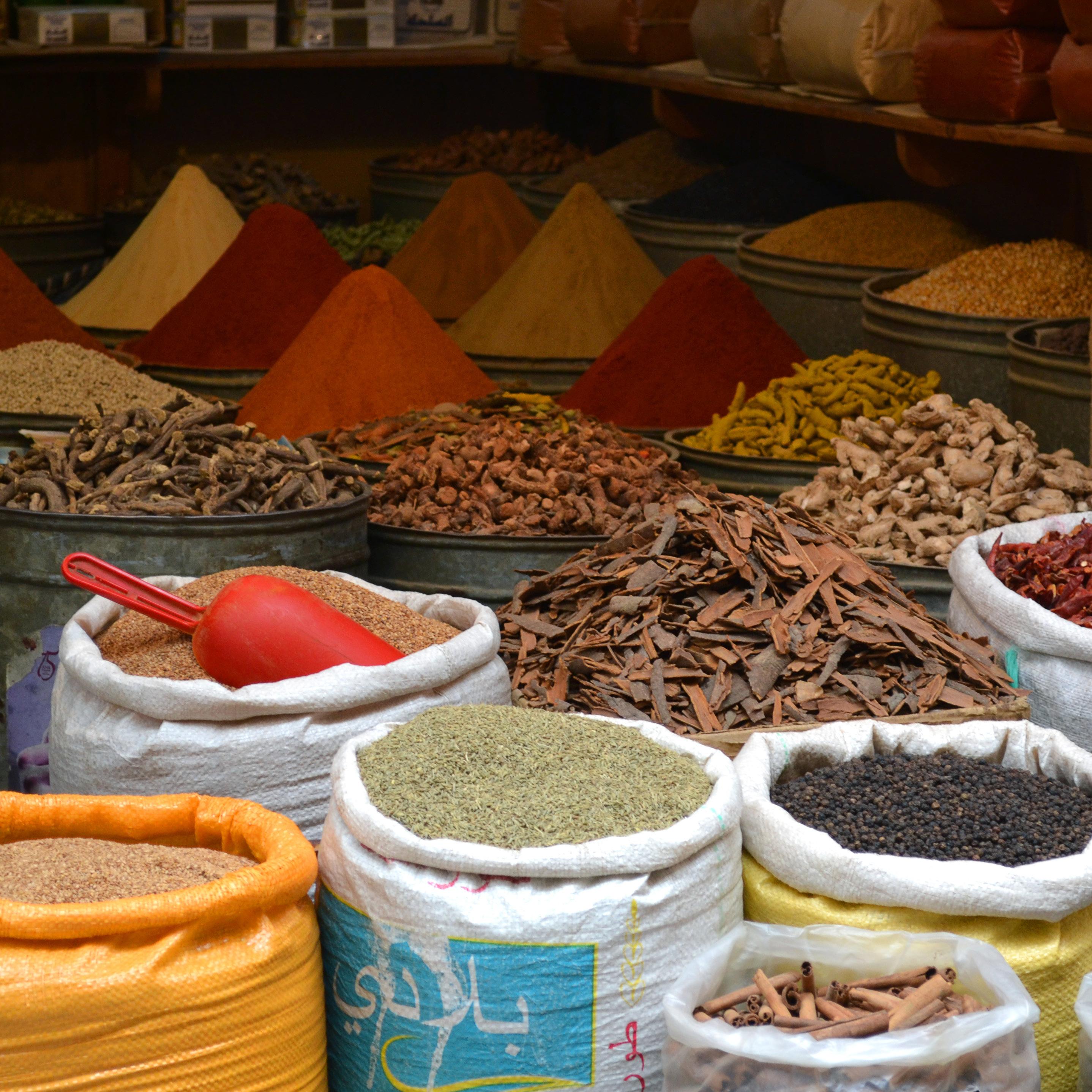
In one dusty spice shop, jars of ras-el-hanout (which translates as ‘shopkeeper’s choice’) line the top shelf. Consisting of anything up to a hundred different spices, no two mixtures are the same and only the maker knows the quantity of the various ingredients. When I ask the shopkeeper what the contents of his mixture are, he throws his hands up dramatically and exclaims: “This is the finest ras-elhanout in all of Fés, and the ingredients are secret.”
A seductive aroma wafting from a nearby food stall reminds me that I have a lunch date. Moroccan hospitality is famous and an invitation to dine with a family is never to be turned down. Any local cook will tell you that the best Moroccan cuisine is eaten at home, lovingly prepared by the lady of the house.
“Welcome my friend, come, my home is your home,” says my host Taleb drawing me into his home. I follow him down a labyrinth of passageways and up a flight of stairs and into a spacious salon. The walls are decked out with intricate woodwork, colorful zellige tiles and graceful archways, and the floor is covered in beautifully woven Berber rugs and carpets.
Mint tea is traditionally served before and after a meal, and today is no exception. The tall silver teapot packed with fresh mint leaves, tea and sugar duly appears on an antique silver serving tray, and after the tea has brewed for some minutes, Taleb makes a ceremony of pouring the fragrant golden liquid from a great height into small decorative glasses.
Taleb’s wife, Nahmiah and his two daughters serve the first course of lunch: a sumptuous salad of oranges, cantaloupes, carrots, Dijon mustard and balsamic vinegar. The unlikely marriage of these ingredients is simply delightful. When there’s a guest in a Moroccan home, the women may not always eat with the family, but allowances are made when visitors arrive and Nahmiah joins us for lunch.
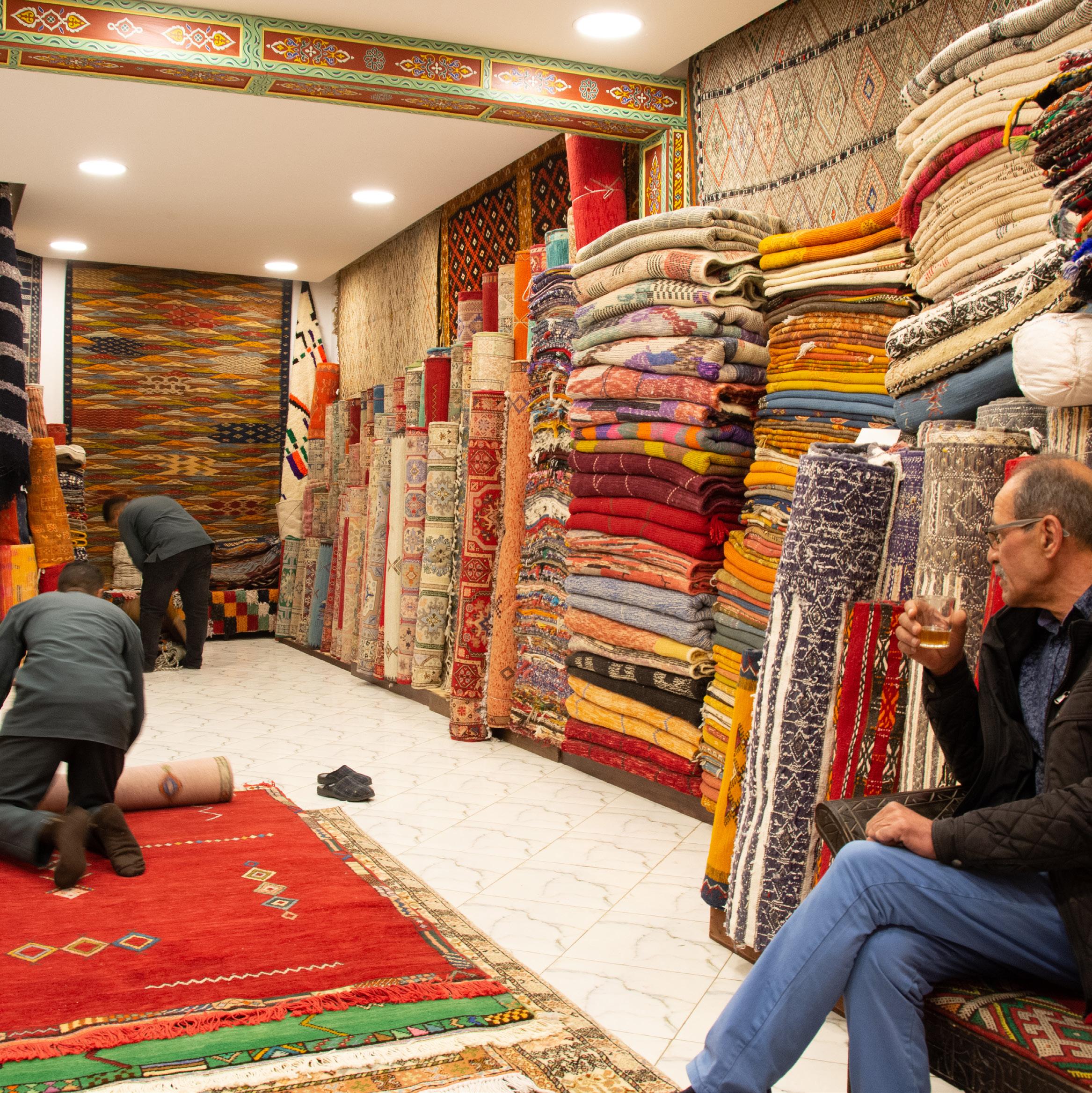
Next comes the tajine (or tagine), one of Morocco’s most famous dishes. The name refers to the conical-lidded pot in which it is prepared, as well as the intricately spiced stew of meat and vegetables, sometimes with dried fruits and nuts, cooked very slowly over a charcoal fire. Common spices used in tajines include ginger, cumin, turmeric, cinnamon and saffron and typical tajine combinations include lamb with raisins and almonds, beef with prunes and apples, and lamb with dates. Today it’s a Moroccan classic; chicken tajine with green olives and preserved lemons - a simple yet delicious dish that is accompanied by thick wedges of crusty Moroccan flat bread, perfect for soaking up the sauce.
The arrival of a large platter topped with a mountainous mound of steaming couscous replete with roast pumpkin, raisins, and almonds topped with fresh coriander has me loosening my belt. What many people don't realize, is that couscous is not traditionally considered a main course, rather it is the dish served at the end of the meal to achieve total satiation.
The basic premise behind Moroccan hospitality is that no guest shall go home hungry and Nahmiah is making sure I leave her table on all fours. After the meal we retire to the cushioned divans that line the walls to stretch our legs and partake in more mint tea. Sipping on the refreshing sweet liquid and nibbling on fruit, I now fully understand why Moroccan cuisine is one of the world’s best.
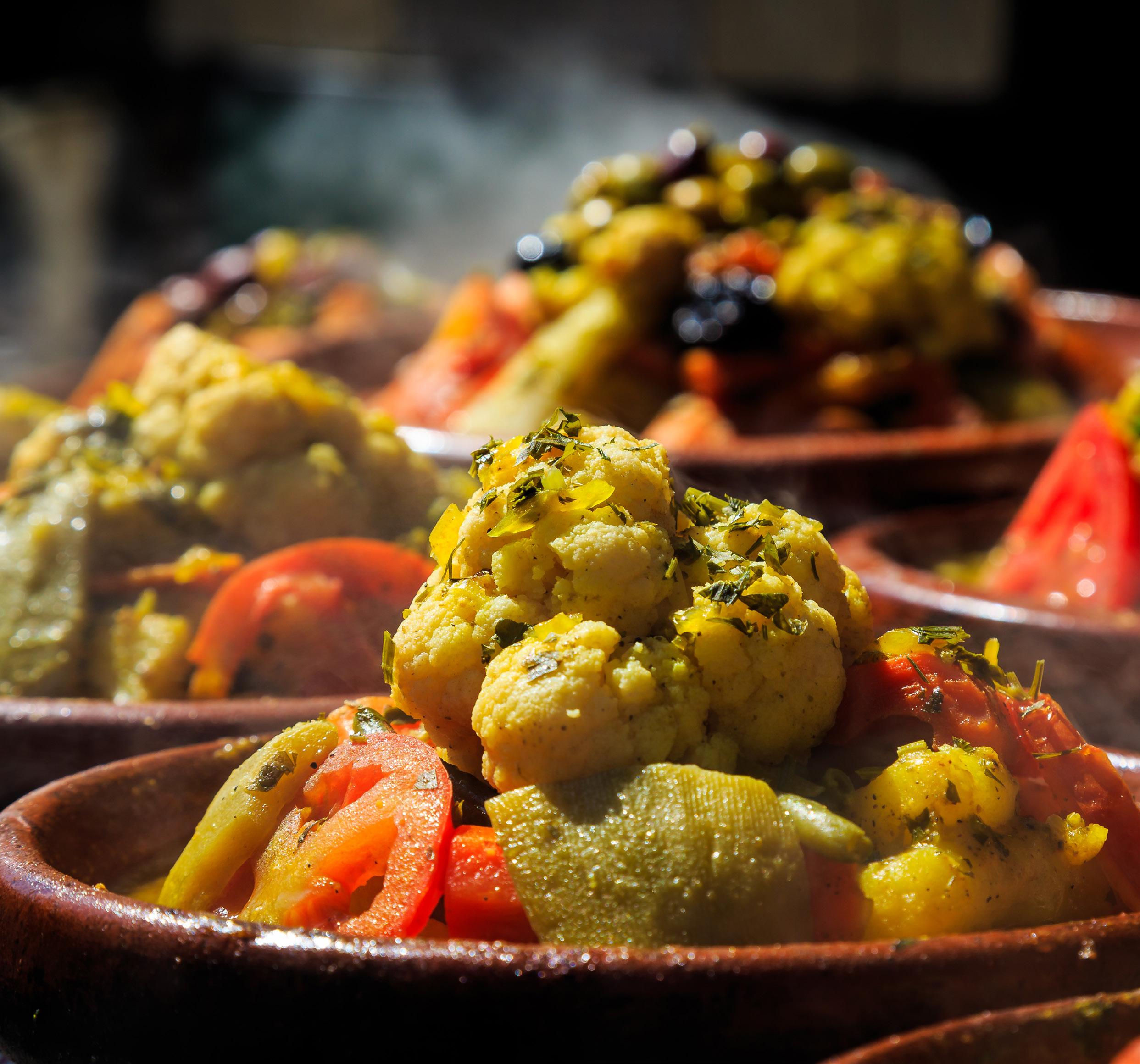
Mint Tea
Suggested amounts for a 3-cup teapot (enough for 6 small glasses)
• 1 tablespoon of Chinese green gunpowder tea • A generous handful of fresh mint, with more leaves than stem • 25-30g of sugar (adjust to taste)
First rinse the teapot with boiling water and then throw this water away. Put all of the above ingredients into the teapot and cover with boiling water. Allow the tea to ‘steep’ for at least 3 minutes then stir once or twice. Pour one glass of liquid into a glass, and then return this glassful to the pot. Now pour the tea and garnish with fresh mint leaves if required. Try pouring the tea into the glasses from as high a point as possible as this will ‘aerate’ the tea and allow the fragrance to permeate the room.
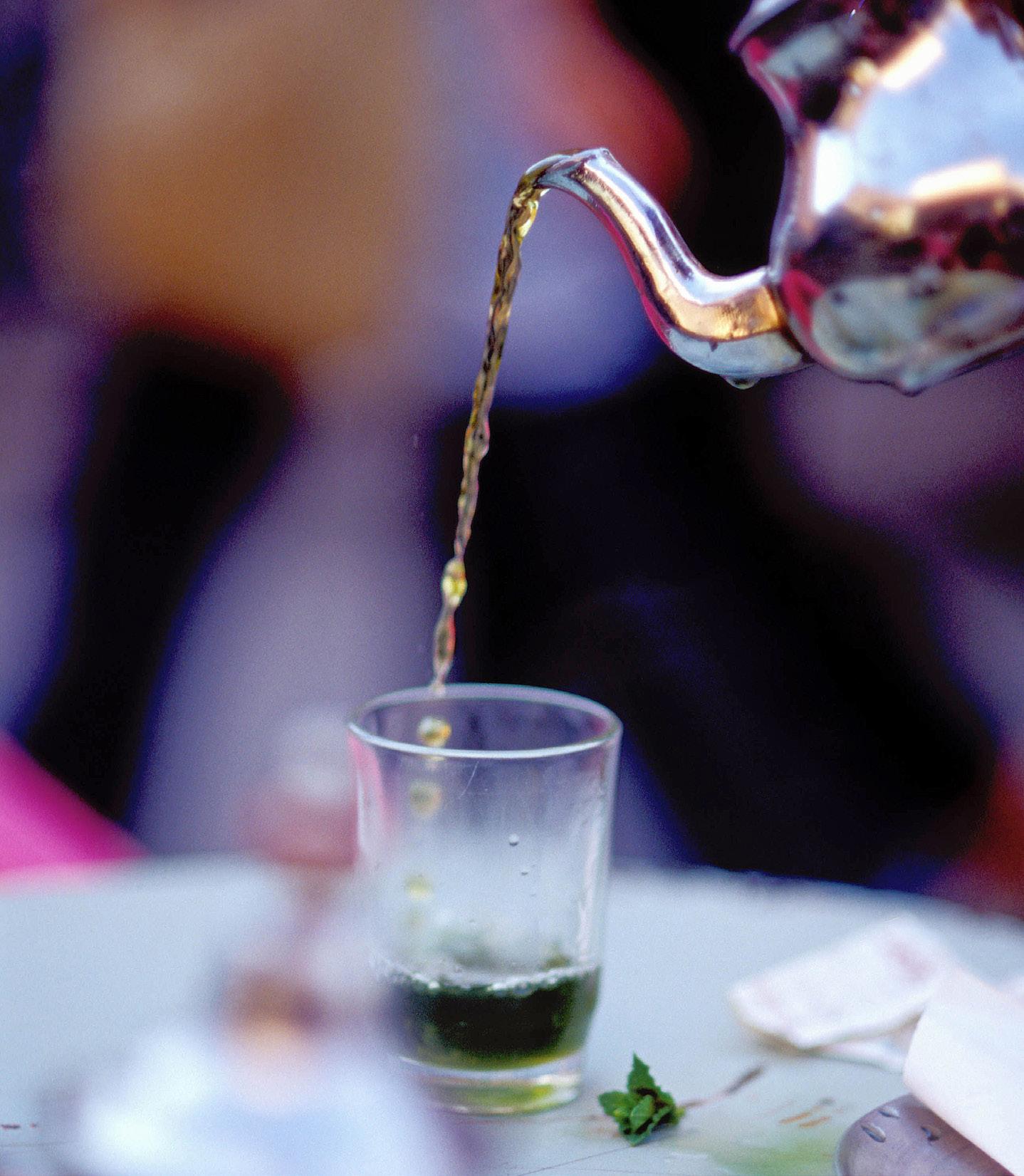
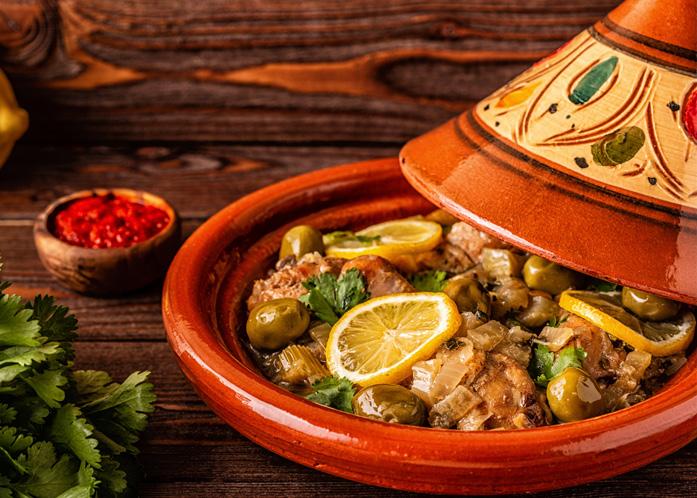
Chicken Tajine with lemons and olives (serves 4)
This is a classic Moroccan tajine
• 3 onions, peeled and sliced • 4 chicken legs with thighs • 2 tablespoons olive oil • 1-teaspoon ground turmeric • 1-teaspoon ground ginger • 1-½ cups chicken stock • Sea salt and ground pepper • 2 preserved lemons, quartered • 1 cup green olives • ¼ cup chopped fresh coriander
Place onions in the base of a tajine pot or casserole. Arrange chicken portions on the bed of onions, drizzle with olive oil and dust with spices. Pour over stock and season with salt and pepper.
Cover the pan and bring the liquid to the boil then turn down the heat to simmer for 1-½ hours, turning the chicken pieces once or twice, until the chicken tests cooked and the liquid is much reduced. Alternatively, the cooking can be done in an oven heated to 180°c.
Add the preserved lemons, olives and coriander to the sauce and cook for 10 minutes more. Skim any excess fat from the surface before serving. Serve with wedges of chewy, soft-crusted Moroccan bread.
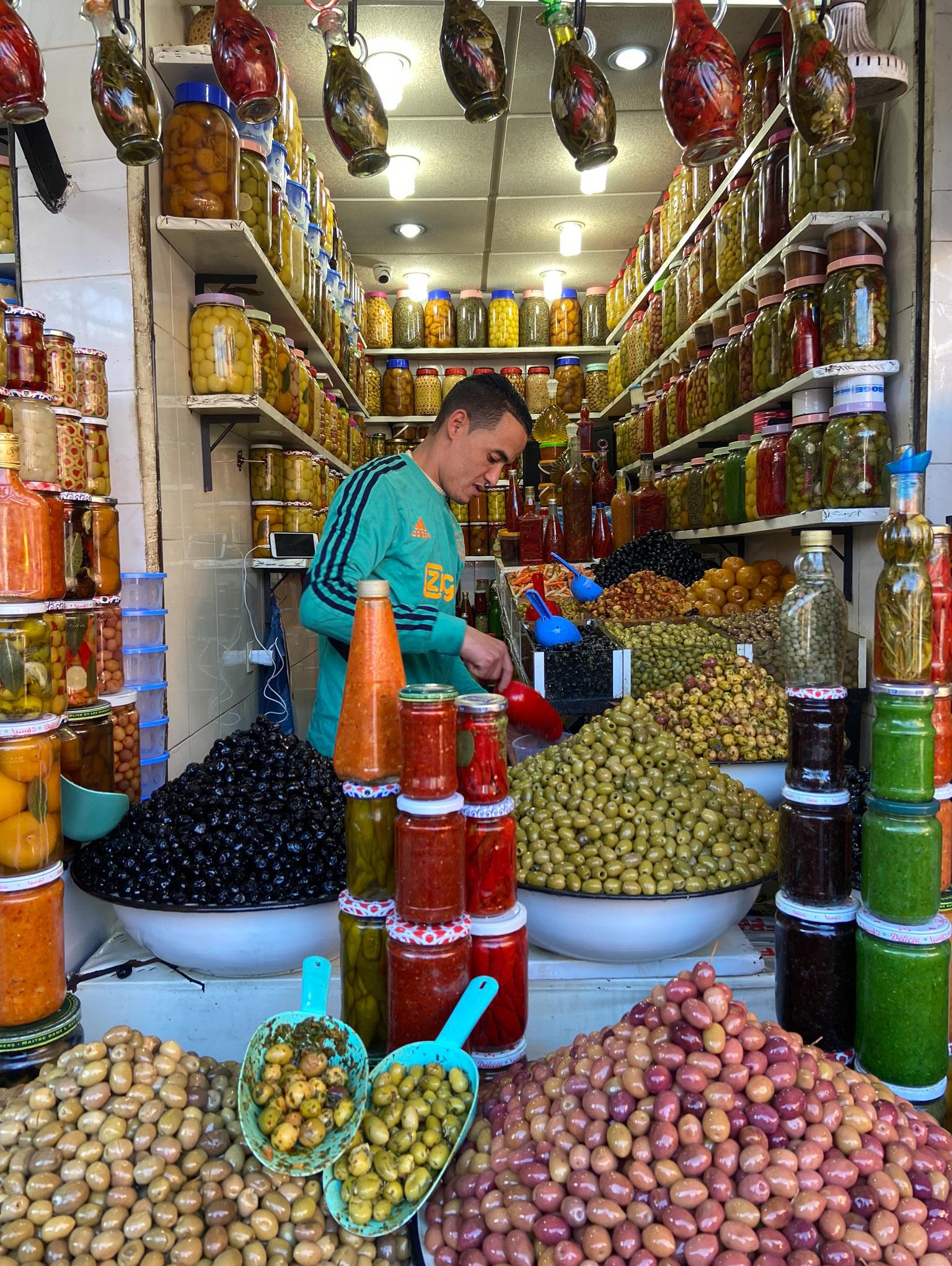
One of the South Island’s most photographed hikes, a viewpoint above Lake Wanaka. The walk to Roy’s Peak takes 5-7 hours but we were low on time so we cheated and caught a helicopter to this spot, Coromandel Peak, just below Roy’s Peak with basically the same view.

NEW ZEALAND A Photographic Journey
Featured Photographer: Alexx Hayward

Instagram: @findingalexx Website: findingalexx.com Gear: Lumix G9 & G100, Google Pixel 4a 5G, DJI Mavic 2 Pro
Alexx is a Kiwi travel photographer and solo female travel blogger. Before the pandemic she traveled fulltime working for travel and lifestyle brands around the world, but in March 2020 when borders started closing she returned home to New Zealand and she’s been “stuck” there ever since. Fortunately it’s a beautiful country to be stuck in, and Alexx has made the most of her unexpected and extended period of time there by exploring her own backyard.


Tekapo is a stargazing paradise, so much so that the area is now an International Dark Sky Reserve.

A glacial lake in Fiordland National Park shot from a scenic flight over Milford Sound


A scenic flight over the mountains that surround Queenstown is an absolute must-do

A hot tub with a view from an off-grid tiny house in the Wairarapa


The road to Aoraki / Mount Cook, New Zealand’s highest mountain at 3724m. The bright blue lake is Lake Pukaki, and its color is due to glacial flour suspended in the water after melting off the glaciers in the Southern Alps.
Milford Sound is best explored by kayak, so you can understand the scale of the mountains that tower over the fiord.

Kaikoura is a South Island coastal town best known for whale watching, but dusky dolphins also call Kaikoura’s waters home. Jump on a dolphin swimming tour and get into the ocean with these playful wild creatures, it’s one of the most magical experiences I’ve ever had.

New Zealand’s South Island is mostly recognized as a winter wonderland, but Abel Tasman National Park, at the top of the island, has some worldclass beaches and bays. This spot is Te Pukatea Bay, accessible by water taxi, kayak or as part of the multi-day Abel Tasman Coastal Track hike.

New Zealand’s glamping scene is seriously impressive for a small country, and there are pods, domes, tree houses and cabins all over the country. This glass box is called a PurePod, there are six in the South Island, boasting a glass ceiling for stargazing, off-grid facilities and epic rural and mountain views.


The lighthouse of Cape Reinga, at the northern tip of the North Island. Usually this place would be packed with bus tours at sunset but we visited in July 2020 when tourism was at its lowest after just emerging from the first lockdown.

Sunrise over the lush vineyards in Marlborough, the busiest and most well-known wine region in New Zealand. Marlborough is famous for its Sauvignon Blanc, and there are a whopping 30 cellar doors within a 10 minute drive.










